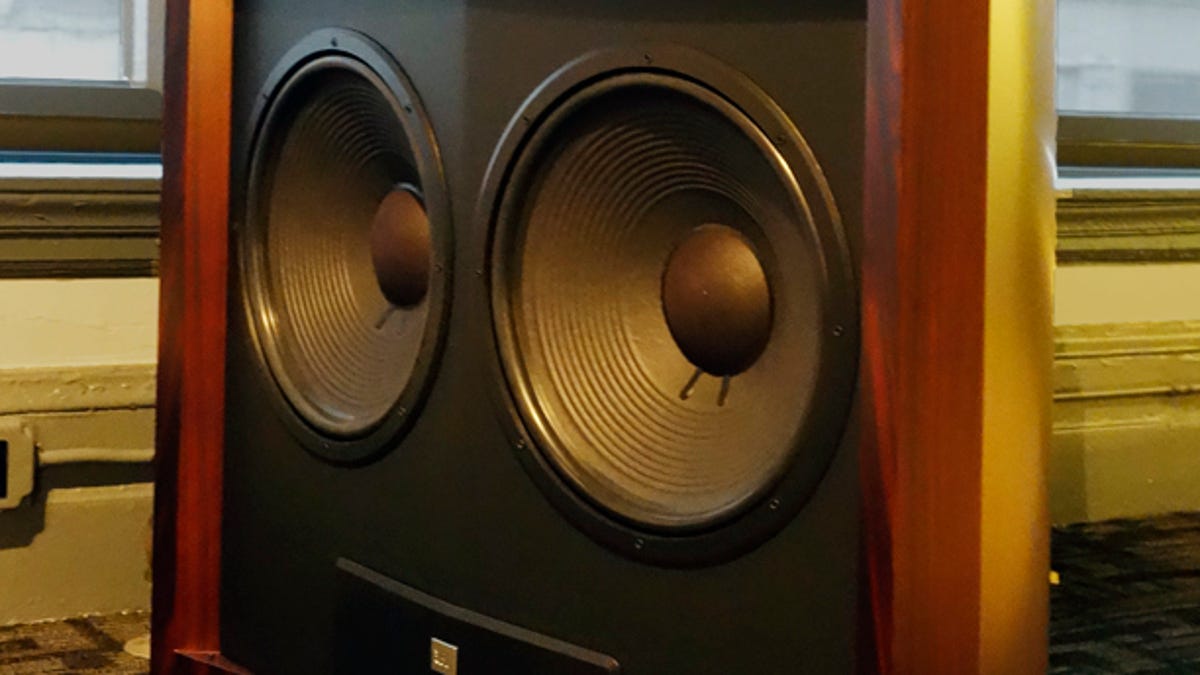JBL's ultimate speaker: Everest DD66000
The Audiophiliac auditions JBL's best speaker, and it's really, really good.

I cover a lot of great-sounding gear on this blog, ranging from the $22 Lepai LP 2020A stereo integrated amplifier, $129 Pioneer SP-BS22-LR speakers, and the $650 Tekton M-Lore towers. This time I'm going all the way with a true state-of-the-art contender: the JBL Everest DD66000. It's the speaker equivalent of a fire-breathing Ferrari. I got the chance to spend quality time with a pair of these outrageously awesome speakers at EarsNova in New York last week for about an hour. Viva Audio tube amplifiers were driving the speakers, and the digital converter was by dCS Digital.
I started with jazz legend Art Pepper's "Straight Life" CD, and the sound was spot-on. Pepper's sax was as big as life, and so were the bass, drums, and piano. Over the Everests, they were closer to the sound of real instruments, and less like a hi-fi attempting to reproduce the sound of the instruments. The tonality was perfect, and the shading of the acoustic bass' dynamics was realistic. Horn speakers like the Everest have a special affinity for drums and the effortless metallic shimmer of cymbals.
We next rocked out with the White Stripes, and again the Everests dazzled. Meg White's thundering drums were visceral and alive, and when Jack White cut loose on guitar, the Everests planted a big smile on my face. Few highly regarded audiophile speakers can party like these big JBLs.
I've written many times about the evils of dynamic range compressionin recordings, but even when the dynamics are intact, most speakers squash them. The Everests let them be; large and oh-so-subtle dynamic shadings on Radiohead's "Kid A" were revealed like never before. The broad and deep soundstage unleashed new layers of depth. The Everests connect the dots better than most speakers, and the music engages on a different level, so you don't think about the sound per se. The Everests liberate the music and set it free.
The Everest isn't a "lifestyle" speaker; each one weighs a hefty 300 pounds, and they're 43 inches high, 38 inches wide, and 18.25 inches deep. They're also really expensive; the pair at EarsNova runs $42,000. That's a lot of money, but far below the stratospheric prices of most ultra-high-end speakers on the market. Heck, it's nice every now and then to see just how far a great hi-fi can go, and the Everests can take your breath away. They can make every recording sound better than you thought possible.
The speaker features an ultra-high-frequency "Bi-Radial" horn driver with a 1-inch beryllium diaphragm and a neodymium magnet, and it delivers ultra-high-frequency response to above 50 kilohertz. A second compression horn driver for the midrange frequencies uses a 4-inch beryllium diaphragm with a four-inch aluminum edge-wound voice coil. The Everest also features two 15-inch pulp-cone Aquaplas coated woofers.

